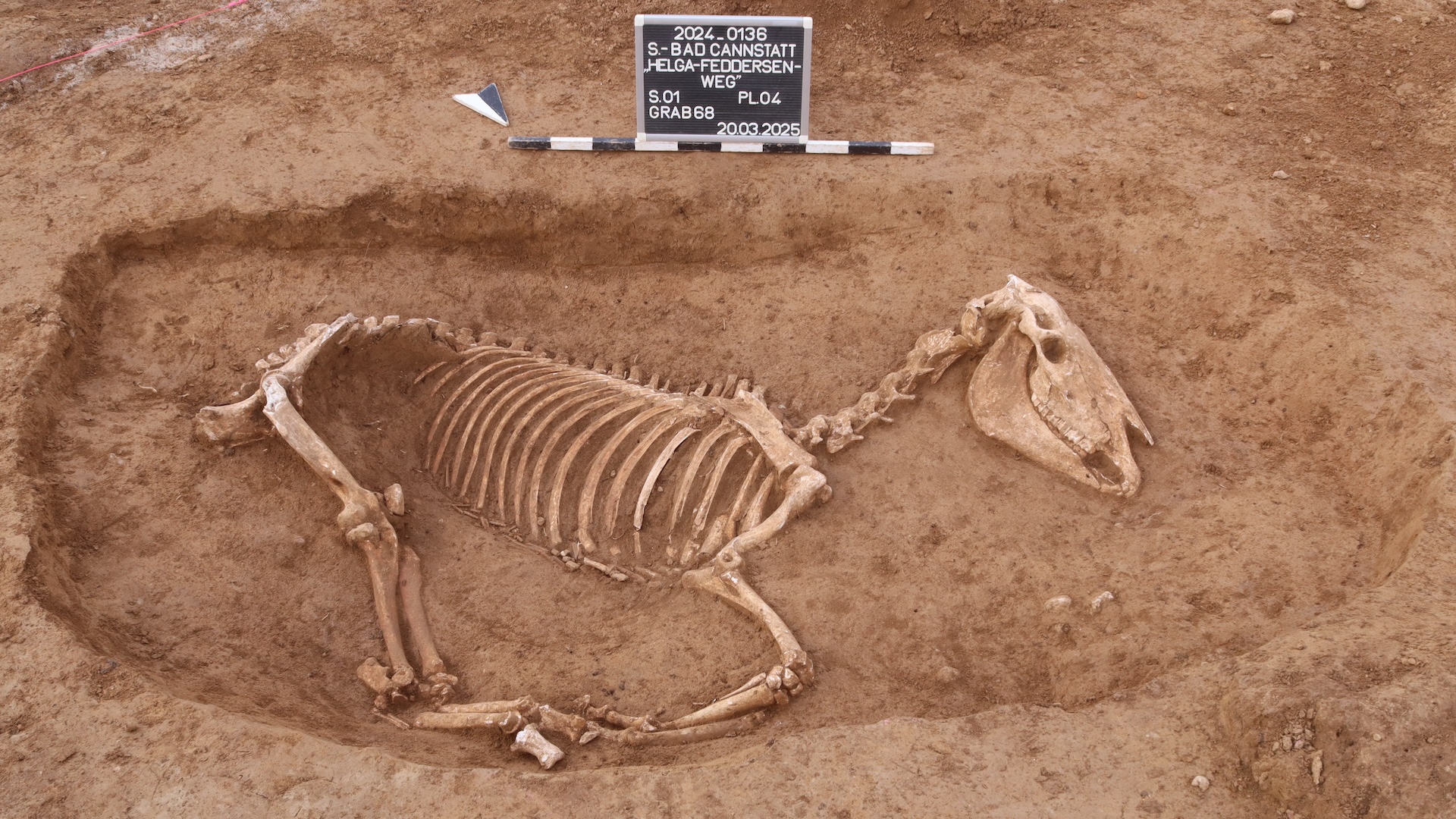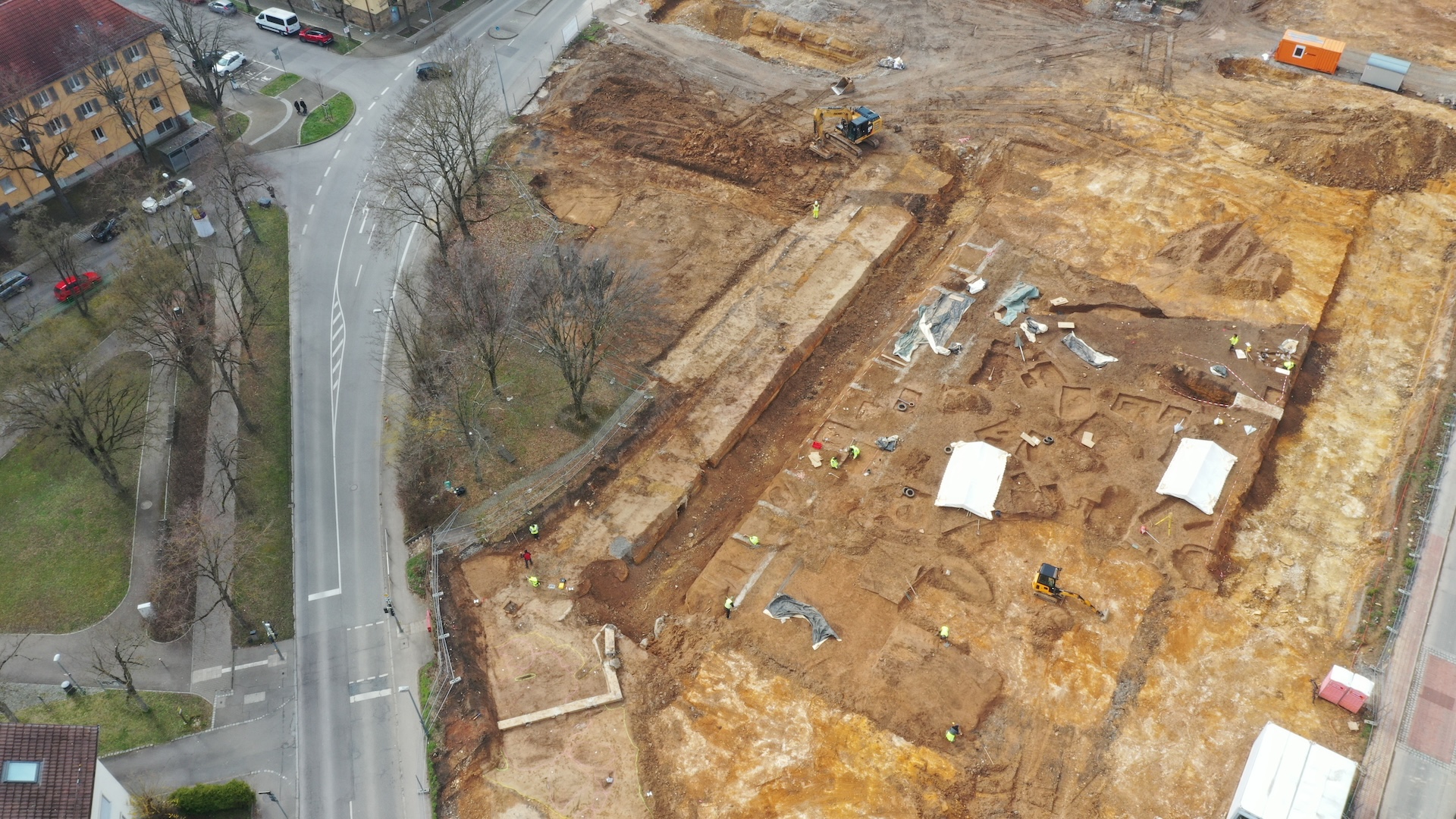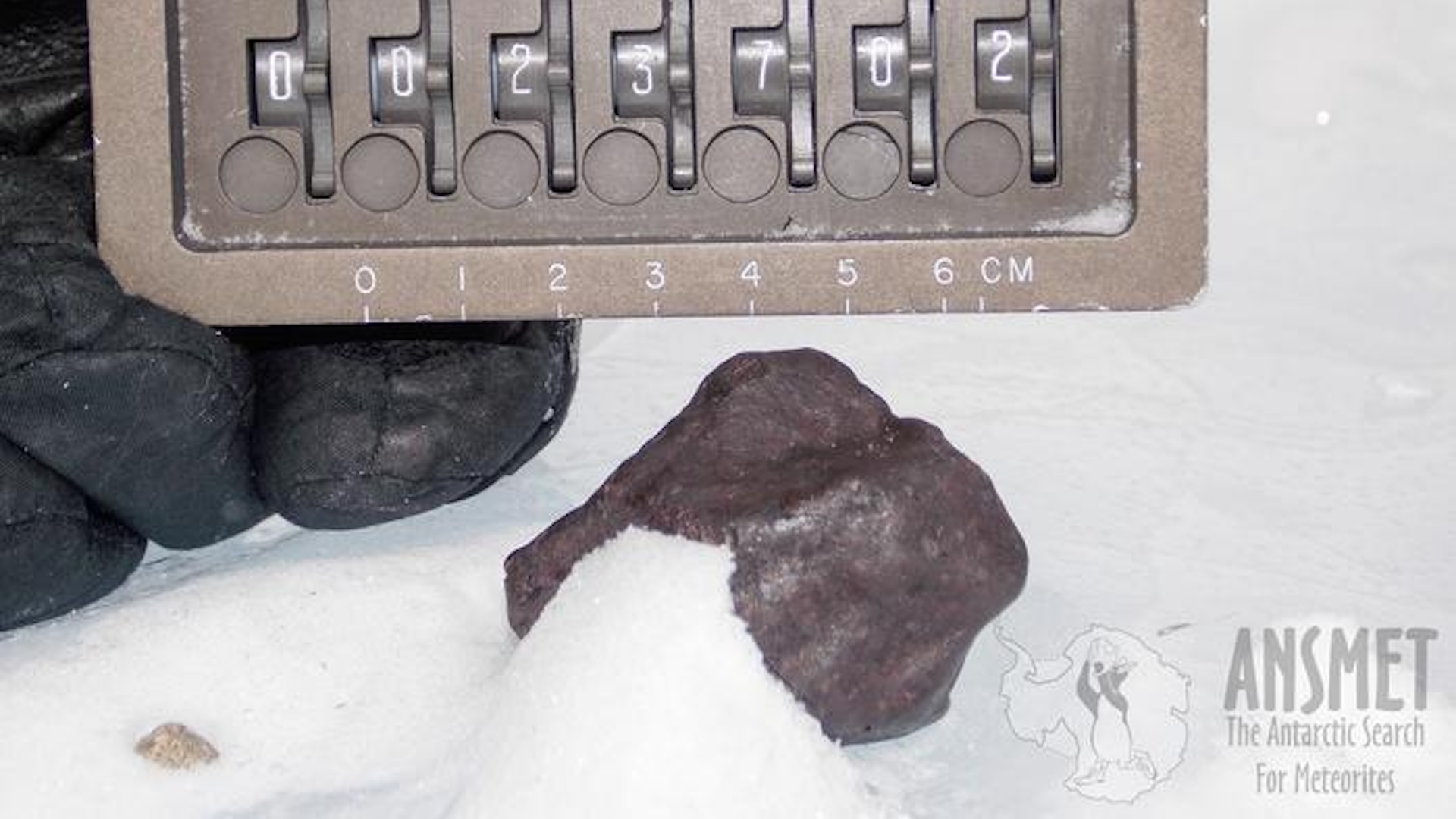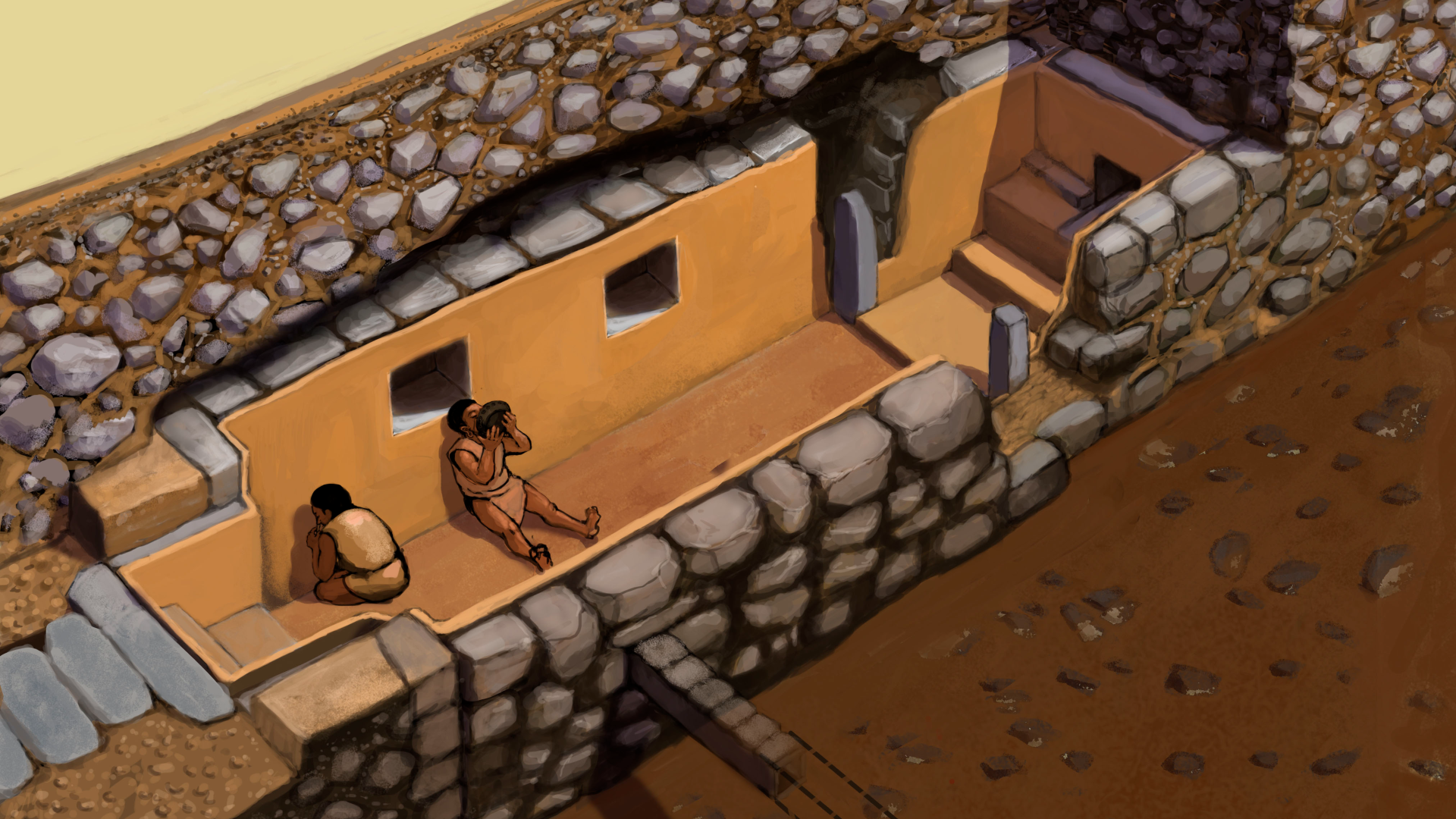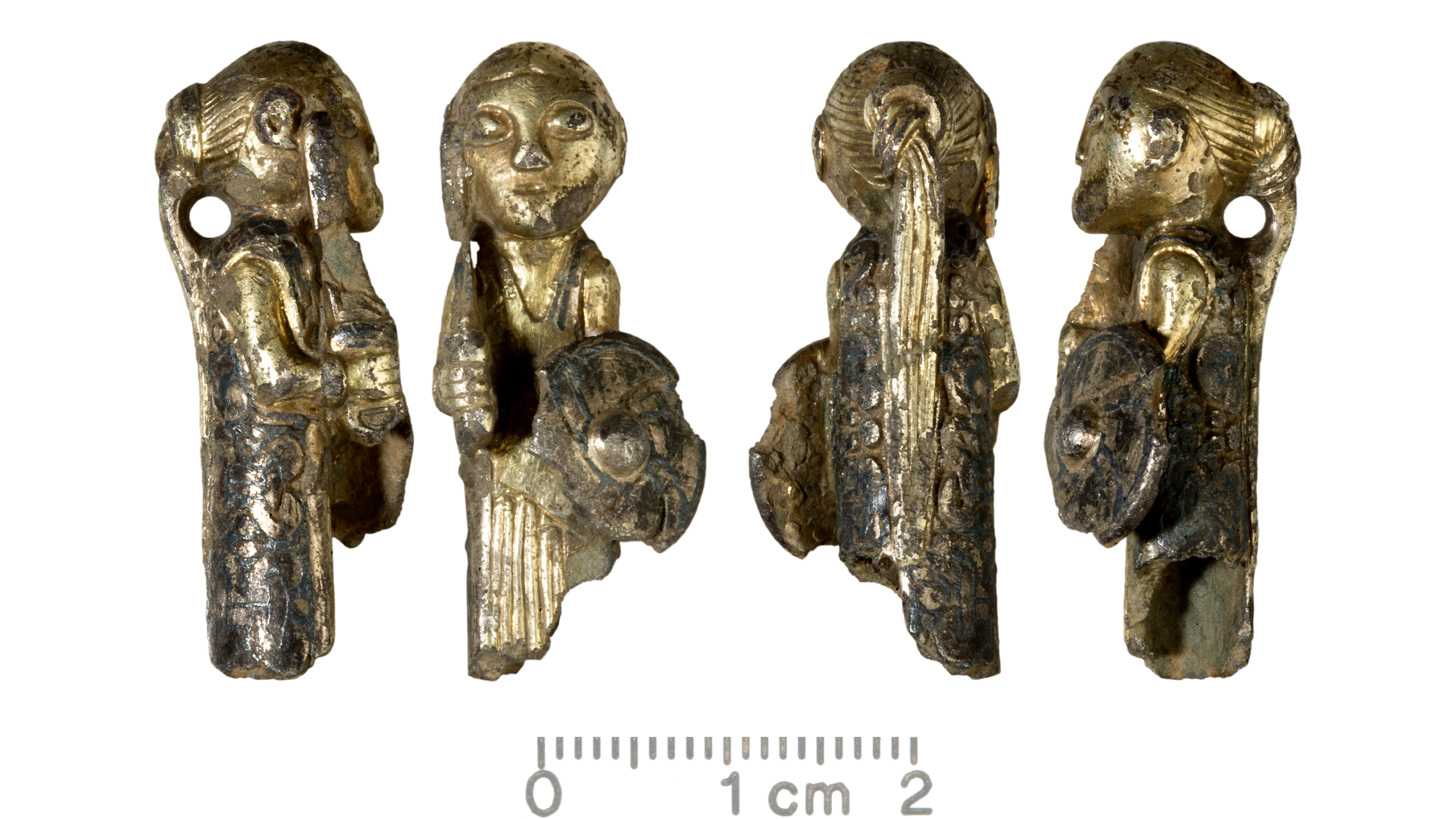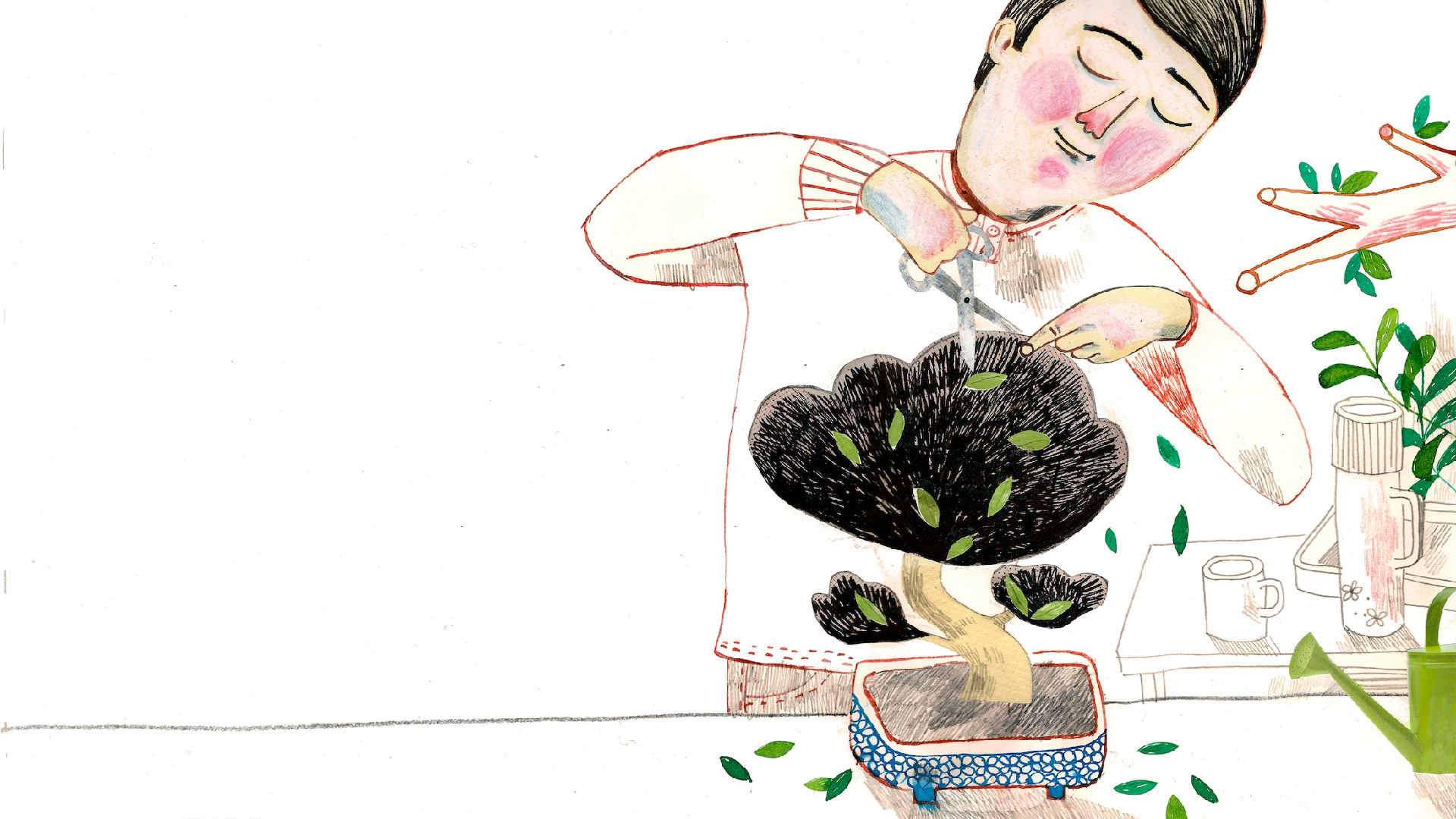Archaeologists in Germany have unearthed a vast horse cemetery from Roman times, a discovery that is “very rare,” according to researchers.
The excavation, conducted in Stuttgart’s borough of Bad Cannstatt, has revealed the skeletal remains of more than 100 horses. These animals were part of a Roman cavalry unit known as Ala, which was active in what is now southwest Germany during the second century A.D., radiocarbon dating of the horses’ bones revealed.
“Finding such a large horse cemetery from Roman times is very rare,” Sarah Roth, the archaeologist in charge at the State Office for Monument Preservation (LAD) in the Stuttgart Regional Council, told Live Science in an email. While a few horse burials had been found in Bad Cannstatt since the 1920s, a 2024 excavation ahead of a new construction project revealed that the burial ground was teeming with equid remains.
“We hadn’t expected to find so many horses still preserved in the ground,” Roth said. “This was truly a surprise!”
The warhorse cemetery also held the remains of a Roman-era man buried on his stomach and without grave goods, indicating that he likely was an outsider who wasn’t held in high esteem. “Its [the body’s] position suggests that the man was ‘disposed of’ here rather than given a regular burial,” as a regular cemetery for people was only about 0.3 miles (0.5 kilometers) away, Roth said.
Related: Roman-era skeletons buried in embrace, on top of a horse, weren’t lovers, DNA analysis shows
Horse burial ground
The Roman cavalry unit at Bad Cannstatt patrolled the border of the Roman Empire from about A.D. 100 to 150. “The horsemen were responsible for controlling their section of the border,” Roth said. “As horses were the fastest means of transport on land at the time, they were in particular used in urgent emergencies.”
Ala likely included nearly 500 riders and at least 700 horses, according to a translated statement from LAD. When the unit’s horses died, the Romans buried them in a specific area that was about 1,312 feet (400 meters) from the cavalry fort and 656 feet (200 m) from the civilian settlement.
The dead horses were dragged into shallow pits and buried on their sides with their legs bent or straight. These burials likely had markers in Roman times, as they were packed closely together yet had very little overlap, Roth said in the statement.
“The horses do not all appear to have died at the same time in a major event such as a battle or epidemic,” Roth said in the statement. “Rather, the animals buried here either died of illness, injury, or other reasons during the Ala’s presence in Bad Cannstatt.”
Alternatively, it’s possible some “were no longer able to fulfill their role as military horses,” she added. “If the horse could still walk on its own, it would have been brought to the horse cemetery and killed on site to avoid having to transport the heavy carcass.”
One buried horse was clearly dear to its owner; it was buried with two jugs and a small oil lamp nestled in the crook of one of its front legs. Grave goods such as these are typically found in Roman-era burials for humans, making the jug and lamp “unusual” to find among horse bones, Roth told Live Science.
“Of the approximately 100 horses we were able to examine, only one had received grave goods,” she said.
The horse cemetery offers a rare look at the use of horses in the Roman army. Further analyses will reveal the horses’ sexes, ages at death and their sizes, as well as possible diseases they had and their causes of death. Future studies may also reveal their ancestral roots, where they were bred and if they were well kept and fed.
Roman emperor quiz: Test your knowledge on the rulers of the ancient empire





